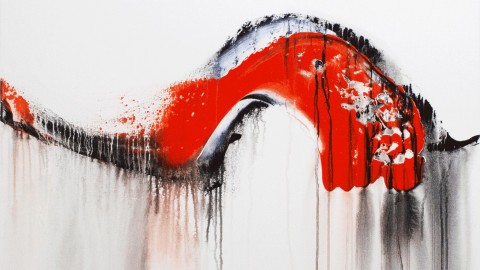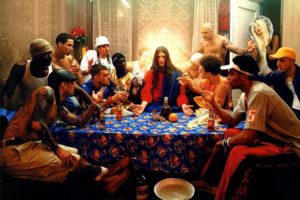It’s been 27 days since most American’s have begun the bell curve that is participation in Christmastide, and the participation in Advent, for those who chose to devotionally and/or liturgically relive the anticipation of the coming of Messiah. Yet now, the gift wrap is all torn asunder, and presents have all been revealed. The holiday classics have all aired for the year. The eggnog carton is empty. The ugly sweater parties have ceased. The derives, caroling sessions, pageants, and catadas of advent are now all living on our smartphone cameras’s hard drives, verses in anticipatory suspension in our minds.
If your experience is anything like mine, the “emotional” curve of Christmas doesn’t exactly look like your standard deviation curve. Rather, it resembles more of a 1929 stock market crash. Christmas 2013, is now over. Or… is it? On this day after Christmas, I’d love to piggy back on an insightful and tradition challenging (well, at least towards the “low-church” traditions of North America) post by King-Ho Leung just a few days earlier. Whereas King provided a perspective on the confusing discrepancy between the historical liturgical calendar and Christmas as broadly celebrated today in contemporary Western culture, I think it would be appropriate to introduce our readers to the real “christmastide,” which are the 12 days of a Christmas between Christmas Day, and Epiphany—the 6th of January.
That’s right folks. While your pagan neighbor tosses out his Christmas tree, strips his house of lights, and stops baking diabetes inducing goodies, the celebration of the mystery of the incarnation can still go on! In short, Epiphany is the elevation of the appearing and revelation of Jesus in the incarnation. At this point, it pretty much sounds like contemporary Christmas. But, Epiphany offers MORE. Although permutations of this liturgial feast abound, it’s unique focus can be boiled down to these theological realities and the events that accompany them:
THE REVELATION OF CHRIST TO MAN: The Baptism of Jesus by John in the Jordan (Matt 3:13-17; Mark 1:9-13; Luke 3:21-22; John 1:29-34) The Wedding at Cana ( Jn 2:1-11).
THE REVELATION OF CHRIST TO THE WORLD: ( namely, the Gentiles) The Arrival of the Magi to Visit Jesus (Matt 2:1-12).
If you think about it, there is much to contemplate regarding the mystery of the incarnation juste in thinking of Jesus’ demonstrated humiliation in the manger. But, a full orbed picture of the God-Man requires us to hold this in tension with His divine nature and unique identity as the Son of God, the King of Kings, and the bringer and ruler of the kingdom. This picture is one that the Jordan Baptism and the Magi’s visit illustrate for us. Compared to the manger scene, it is lamentable how little meditative, musical, and message-saturated time is spent considering the Baptism when compared to the Bethleham scene. This Christmas, extend your season of Incarnation worship and reflection by joining in celebrating Epiphany with your Christian brethren throughout history. And, although we won’t make you jump into a frozen lake like our Epiphany observant Orthodox friends, T2C ( The Two Cities) would love to challenge you to explore the history of your faith family that you might not otherwise have known to participate in…





3 Comments
Leave your reply.